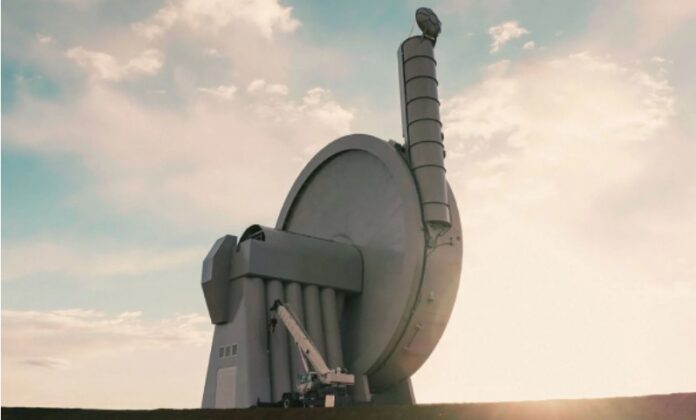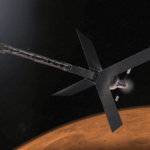A technology that uses whirl and hurl, the method by which Olympic athletes throw a discus, has NASA signing up for a test drive. The idea is to spin a payload up to hypersonic speeds using an electric centrifuge rather than conventional chemical rockets.
The company behind the idea is SpinLaunch. It is unlikely that this technology could be used with humans aboard because the forces of gravity would approach 10,000 Gs of force. But a launcher like this might be useful for small payloads going to space. They couldn’t get there solely from the initial whirl and hurl which could achieve speeds of Mach 6 (over 8,000 kilometres, or 5,000 miles per hour). A rocket engine attached to the payload would fire up to push it to orbit. How a hardware payload could survive 10,000 G forces is another issue. Whatever gets whirled and hurled, obviously, would need to be designed to cope with the immense g-forces that would be exerted upon it.
The advantages of this technology are lower fuel requirements and substantial cost savings per launch. But the more likely use would be in the suborbital realm. Whirl and hurl producing less substantial g-forces could work in delivering suborbital payloads to Earth-based destinations. A suborbital launch wouldn’t have to achieve Mach 5. In fact, differences in speed could determine the distance a payload could be delivered. For example, at Mach 3 the launcher might send a payload to a destination a thousand kilometres (620 miles) away and do it without the payload needing a strapon rocket engine.
Loz Blain, in a New Atlas article published on April 10th, 2022, quotes SpinLaunch’s Founder and CEO Jonathan Yaney who talks about the suborbital capability of the company’s planned offering.
“SpinLaunch is offering a unique suborbital flight and high-speed testing service, and the recent launch agreement with NASA marks a key inflection point…What started as an innovative idea to make space more accessible has materialized into a technically mature and game-changing approach to launch.”
How mature? The first test-firing happened last October. Apparently, it was successful.
From centrifuges to superguns, catapults, maglev devices, and space elevators, inventive companies, defence departments, and engineers have been contemplating new ways to escape the gravity well that is Earth to make it cheaper to put payloads into space. Here is a short history of some of these concepts.
The supergun was an idea created by Gerald Bull, a Canadian inventor, who believed a gun measuring 156-metres (over 510 feet) using a super propellant could launch payloads into space. Bull tried and failed to get the project off the ground financially and shopped it around the world. Eventually, he found a buyer in Saddam Hussein’s Iraq. There it evolved into a project named Big Babylon, a supergun that could fire a 600 kilogram (over 1,300 pounds) projectile 1,000 kilometres in distance or a 200 kilogram (440 pounds) satellite onboard a rocket into orbit. Bull attracted enemies and was assassinated before the project could be completed. The concept, however, lived on after him with another inventor proposing a space cannon, a gas-propelled gun a kilometre (0.62 miles) in length that could propel a payload into orbit. The latter has never been built.
Other researchers have looked to history for inspiration. One is a space catapult which is a stretch on the medieval siege weapon. A catapult capable of delivering a 1,000 kilogram (2,200 pounds) payload to space would have to have an 80-metre (over 260 foot) arm and 100 kiloton counterweight. I doubt there is a material strong enough currently that could be used to build such a launcher without it snapping in half.
Another novel launch concept is to use maglev technology borrowed from trains to accelerate payloads through a vacuum-sealed ascending tunnel to gravity-escaping velocities. This is a hyperloop on steroids. So far, no one has been able to build one of these although a number of hyperloops are under development.
And then there is the space elevator first described in an Arthur C. Clarke science fiction novel, and then proposed for real by Yuri Artsutanov, a Soviet Union scientist. A space elevator pod would be a carbon-nanotube-crafted cable stretching from the Earth’s surface to a space platform in stationary low-Earth orbit. Payloads would move up the cable into space without any need for a chemical rocket or other propulsive force. There have been a number of designs proposed to date, but no one has built a space elevator.
So in one respect, SpinLaunch has already gone much further than all of these other novel space transport concepts. But even with NASA kicking the tires, don’t expect passengers to get whirled and hurled to get to space ever.
















